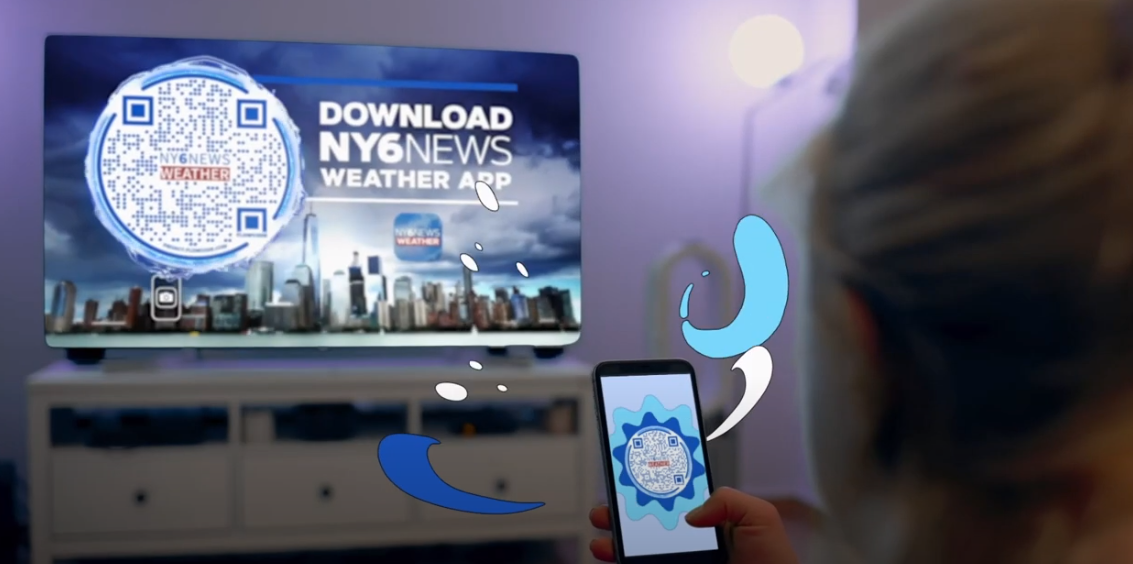by Paul Greeley
Source: marketshare.tvnewscheck.com, February 2022
TV stations are using Flowcodes to provide a direct link from their local clients’ television advertisements to actual sales. “All of our advertisers have seen phenomenal increases,” says Logan Marshall, the digital sales director for KTVX, Nexstar’s ABC affiliate in Salt Lake City.
John Wanamaker’s famous quip questioning the effectiveness of his advertising might not hold water today. Wanamaker said: “Half the money I spend on advertising is wasted; the trouble is, I don’t know which half.”
If the Philadelphia department story merchant were alive today, (Wanamaker died in 1922), he might witness a revolution in advertising that brings together television, mobile phones and a funny-looking graphic called the QR code.
That revolution has the ability to determine exactly how effective local television advertisements perform thanks to those QR codes and their use by Flowcode.
TV stations are using QR codes to provide a direct link from their local clients’ television advertisements to actual sales in a way that was unheard of before.
All because viewers are watching television with their phones in their hands and are using them to access the QR codes.
Stations working with Flowcode can provide their local customers data directly attributable to the use of the QR code, including how many clicked through and how many purchased or signed up for services along with a myriad of other information beneficial to local business like the ZIP codes of respondents.

When Meghan Glenn was the digital sales manager at WGN, Nexstar’s independent in Chicago, she was looking for a way to see “more of the eyeballs that we had on broadcast on the corresponding digital pages. I needed a way to drive digital revenue that was directly tied to broadcast.”
Glenn started working with Flowcode and saw results quickly. “I realized I was looking at analytics that were directly tied to my broadcast audience, and it changed everything,” Glenn says.
Stations’ use of QR codes to drive television viewers to their own digital platforms is not necessarily new.
Many stations have seen success especially when it comes to getting downloads of their news or weather apps.
KATV, Sinclair’s ABC affiliate in Little Rock, Ark., saw a 50% increase in app downloads since using Flowcode during their news broadcasts.
In an August 2021 Market Share column, Michael Fabac, news and marketing director at News-Press & Gazette Co said, “TV stations are finding that QR codes can be used as a way to engage with our audience in a more direct way.”
And in that same article, Mitchell West, regional director at Nexstar, said QR codes “functionality crosses sales and news.”
And that’s what’s new today — how stations are using QR codes to help paid advertisers increase sales directly, and in most cases, immediately.


Alexander Davidson, digital specialist at WMDT, Marquee Broadcasting’s ABC-CW affiliates in Salisbury, Md., says their local advertisers have used Flowcode on his station and “saw a 53% click-through rate, which was a significant increase to their potential applicant engagement.”
Logan Marshall, the digital sales director for KTVX, Nexstar’s ABC affiliate in Salt Lake City, says he’s “used QR codes to directly attribute traffic to a linear lifestyle show segment.”
Marshall’s referring to KTVX’s two-hour weekday morning program, Good Things Utah, a lifestyle show that “has everything from recipes, DIY, parenting and relationship advice,” Marshall says.
He says by using the Flowcode QR codes, “you can see an immediate correlation directly attributed to increases in user traffic and engagement metrics. All of our advertisers have seen phenomenal increases.”
What opened up Glenn’s eyes about the power and potential of QR codes for local TV advertisers began when some of WGN’s more entertainment-focused reporters wanted to grow their digital footprints, and were willing to experiment with QR codes.
During WGN’s morning news, a cooking segment was getting 1,500-3,500 scans every time the QR code was displayed on the screen, Glenn says.
“It provided a huge insight for us,” Glenn says.
A local advertiser in a paid sponsored segment on WGN’s weekday morning lifestyle show, Daytime Chicago, wanted to sell tickets to their exhibit, and the station used Flowcode to take viewers directly to a link to buy tickets, Glenn says. Viewers saw and scanned the code, and 41% clicked through to the tickets page. “I could go back to these agencies and brands and say: I know how how my viewers responded to your television segment.”
That level of digital transparency and measurability has “never been available for broadcast until Flowcode,” Glenn says.
Glenn is now the sales director for Flowcode TV.
Marshall says he’s used Flowcode’s QR system for “big-ticket items such as automotive and real estate to direct response with phenomenal success across the board. QR codes really do drive accessibility to our clients’ products because it is the path of least resistance.”
Marshall sees the use of QR codes expanding in local TV.
“As an industry, it opens up new sponsorship opportunities providing value for our advertisers overall,” he says. “As for working with Flowcode, they are absolutely phenomenal.”

